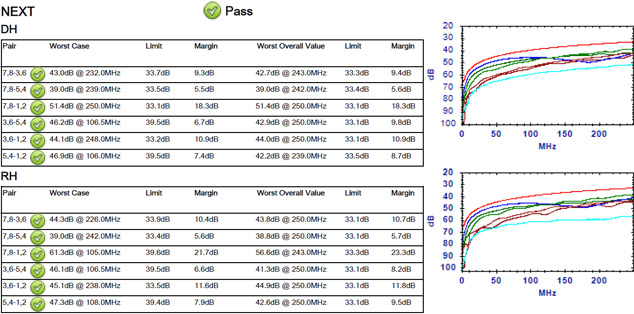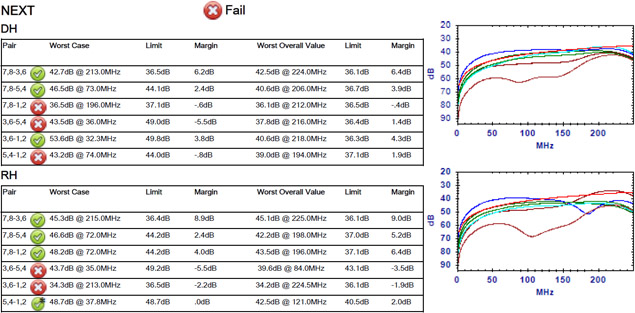
Frequent inquiries of companies building LAN networks have initiated our research on devices that will effectively protect devices connected to the Gigabit Ethernet network, at the same time giving certainty of high transmission standards.
Gigabit Ethernet networks mostly use the 100Base-T standard, so a 2-way transmission using PAM-5 encoding with a 125MHz clock frequency. In comparison to the 100Mbit (100Base-T) LAN, the clock frequency is not much higher and gives the impression of not making much difference, especially since it can work on 5-th and 5e category cables.
The above difference would not have much meaning if not the fact that in the 100Base-T networks two transmission lines are used (transmitting and receiving) and in the 1000Base-T networks there are four transmission and receiving lines. In the first case, the digital interference from the Tx pair to the Rx pair and from the Rx pair to the Tx pair occurs, while in the second case each transmitting / receiving pair interacts with each other transmitting / receiving pair - there are 12 causes of crosstalk that disrupt the proper signals and cause errors in transmission, and thus the need to repeat packets. The more repeating packets, the smaller the amount of data transmitted (lower bandwidth) and delays in LAN operation.
.

As can be seen in the above figures, there are 6 times more interfering signals in the Gigabit Ethernet network than in the 100Mbit network. Taking into account the higher frequency, the greater difficulty in the production of printed circuits and the use of higher quality connectors, it can be assumed that protection for the Gigabit Ethernet network is 6 times more difficult than the protection for the 100Mbit network.
Work on our devices lasted for one and a half year and included many structural simulations, calculations, tests and the selection of appropriate electronic components. Requirements for impact strength and transmission quality of printed circuits could only be met by three of the most well-known manufacturers. The comparative tests carried out with the devices of other leading manufacturers confirmed that our products show the best parameters not only for 1000Base-T gigabit networks, but are the only ones that fully pass the tests for 6-th category cabling (4 x 250Mhz) and are suitable for the 1000Base-Tx network. The following drawings show a shortened test result of the Ewimar device and one of the competing products declared for 6-th cabling categories. Both tests were performed using a tester with the current calibration certificate, by directly connecting the protection to the tester ports.

A shortened result of our surge protector test

A shortened result of competive surge protectors test
Despite the correct operation of the Gigabit Ethernet network on the 5-th and 6-th category cabling, in large networks, the shielded cabling of the minimum 6-th category is used. The greater the number of LAN cables in one place, the greater the number of interferences that add up to the unstable LAN network. The qualitative reserve of parameters, allows to protect the installation from the need to modernize it and even replace it, along with increasing the number of devices connected to the network.
Similar dependencies also apply to accessories used to build infrastructure - RJ-45 connectors, connection patchpanels, patchcords and protective devices. A single low-quality surge protector connected to a computer will not cause major transmission problems, however several computers next to each other together with such protections may cause the transmission to slow down. Placing poor quality products in RACK cabinets where there are several dozen or even several hundred connections carries the risk of creating many problems.